Adam Yamey's Blog: YAMEY, page 243
April 1, 2012
ALIWAL: my first novel
Henry Bergmann lives on the frontier of the Cape Colony in Aliwal North, the town he helped to establish in 1849.
He is the richest man in the town, and probably one of the wealthiest in the Colony.
His integrity and concern for others has gained him positions of responsibility including managing the town's bank.
He meets a respected gold prospector, who invites him to join a venture that promises to yield rewards beyond his wildest expectations .
Although he has enough already, he would like to use the promised riches to improve the prosperity of the town, to develop it into the pride of the Colony.
He accepts, travels north into the Transvaal, and becomes entwined in something that will lead him gradually, but inexorably, towards a tragic fate.
Fact and fiction are interwoven in ALIWAL, my first biographical novel.
ISBN: 978-1-4461-8322-9
Available as a book or an ebook on: www.lulu.com, and also on Amazon, where a Kindle version is on offer.
March 31, 2012
Restaurants, hotels, and other attractions
Over the past few years, I have been writing brief reviews for hotels, restaurants, and tourist attractions. You can read these on http://www.tripadvisor.co.uk/members-reviews/barklyeast .
I hope that some of these may be of use to you!
March 29, 2012
Work in progress
Young Jakob,who left his native Bavaria in 1863in order to seek his fortune, is living many thousands of miles away,across the Equator in southern Africa.
He marriedthere, and his family is growing.
Now, it is 1877.
The Zulus are strugglingwith the British in an attempt to keep control of their lands in Natal.
Elsewhere,in the neighbouring Cape Colony, prospectorsare filling their pockets with diamonds.
Sadly, none ofthese sparklers has ever reached Jakob, who would certainly have known how tomake good use of them.
This does notworry him particularly, because all that he asks of life is to care forhis young family, and to enjoy the occasional glass of brandy.
But now,disaster has struck.
He has beenforcibly separated from his loved ones, and is languishing in a cell behindbars.
Why has hebeen incarcerated?
And will he beable to find a way of getting out?
Mynew novel, set largely in the Orange Free State, is a tale very loosely based on episodesin the life of one of my colourful ancestors.
html hit counter I have recently joined http://www....
May 29, 2011
A collection of my mini-films
April 12, 2011
What readers think about my novel, "ALIWAL"
"Finished Aliwal. Loved it. When's the next one due?" (R. Zainulbhai)
"This book brought back some interesting memories of visits to the town of Aliwal North both as a child and as an adult. As a child I visited the old Bergman store many times and I was reminded of this as I read this fascinating piece of personal history. I commend this book to others seeking to know more about their forebears, Adam Yamey's research into his relative is a great piece of detective work and the story is well told here." (PG Cox, writing on Amazon.com)
"... I recommend this book to all who are interested in German Jewry, early South African colonial history, and to those who just want a good read." (S. Issroff writing in 'Shemot')
"It is well written and reads easily thanks both to the pleasant linearity of the plot and the large use of dialogues.The reader is soon captivated by the adventurous story of its hero and at the end wonders how such a smart and successful man might have so easily become the victim of some mean swindlers and fall therefore from the highest peaks of prosperity and reputation to the desperate situation which drove him to suicide.I congratulate you upon the result of your patient and interesting research into the tragic end of your unfortunate ancestor."
(A Bagiotti, editor)
January 30, 2011
Trip to northern Karnataka, 2009
December 4, 2010
An Event in AUGSBURGPoster 5Poster 4Poster 3Poster 2Poste...
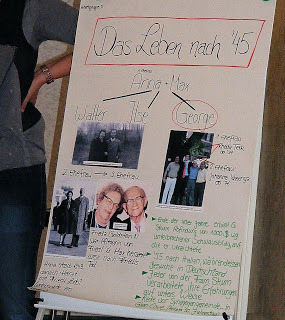 Poster 5
Poster 5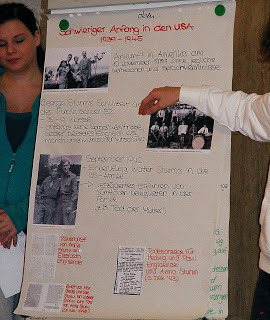 Poster 4
Poster 4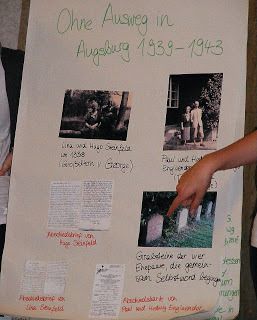 Poster 3
Poster 3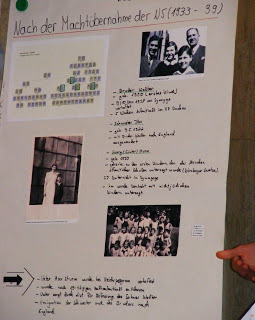 Poster 2
Poster 2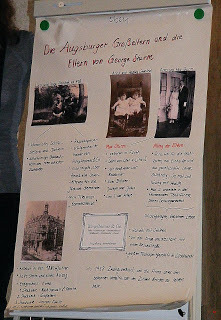 Poster 1
Poster 1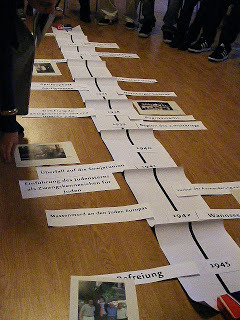
Timeline
Monday, the 15th November 2010, AUGSBURG
I woke early. The sun was still shining. After breakfast, I wandered through the old town, stopping at the Barfüsser Church. The church is completely surrounded by other buildings above which it projects. Although it claimed to be closed, I entered without difficulty. I continued my journey to the synagogue, an impressive building in Halderstrasse whose construction was assisted with substantial financial donations from the Sturm and Steinfeld families. I noticed that most of the doors in the building had bilingual signs: in German and Russian. Some years ago, a history teacher in Melsungen (in Hesse) surprised us by telling us that the Jews were the fastest growing group in Germany. The influx of Jews from the former Soviet Union accounted for this.
George and Max were already there, as was Souzana Hazan and Frau Schönhagen. Diane and her son Alex had left for Paris. Soon, twenty students from the Simpert-Kraemer Gymnasium in Krumbach arrived with their two teachers. The kids were aged from 15 to 17, and had special interests in history, although their faces did not betray this when we all sat in a large circle in one of the rooms in the synagogue.
A long strip of paper was placed like a diameter inside the circle. It was a time line with dates, such as 1871, 1917, 1932, 1938, 1945, and others in between. Rectangular scraps of white paper lay on both sides of the time line. Each child was told to pick up one of these scraps, and to turn it over. Each one bore a historical event, such as 'Wannsee Konferenz", or 'Weimar Republik'. They then placed their pieces of paper where they thought it should be on the time line. Although one girl thought that the Weimar Republic began in 1945, most of the children placed them in the correct places.
Next, Souzanna Hazan read out a history of the Sturm/Steinfeld/Englander families. As she did so, copies of photographs of various family members were handed around the circle of children, and then carefully placed in the relevant points on the time line. Thus the history of the family was placed alongside the history of modern Germany. After this, the time line was divided into 5 sections. Each group of four students had to choose a section and then retire to a work table that contained materials relevant to that section. We adults retired to the Jewish Museum shop across the hallway to drink coffee and chat. After about 45 minutes, the school children joined us, and refreshed themselves with cold drinks and butter filled pretzels. Then we returned to the room where the seminar was being held.
Each group of four students had produced posters illustrating the period they had chosen. One by one the groups of four students presented, and explained what was on their posters (illustrated above).
When a group had given their presentation, they asked George questions that had arisen in their minds whilst they had been preparing their posters. I cannot remember all of their questions but two linger in my mind. Could George speak English when he stepped off the boat at Hoboken? No, he could not, but by the end of the year he was the best speller (of English) in his class. Another child asked whether he helped in the family shop in Augsburg. George pointed out that he would have been little help as a five year old in the sophisticated cloth store, probably a hindrance. He did however help his grandfather gather chestnuts when they walked together in the Siebentischwald Forest on the edge of the city. These, he was told, were good for Opi's rheumatism. The question was interesting because farmer's children such as were attending the seminar would have found it normal to have to 'muck-in' when the family needed extra hands. George coped beautifully with their questions, and rapidly developed a great rapport with the children. It seemed to me that during the three hours that they had spent working on the family history, the children had begun looking at George's family's life and difficulties as if they were their own. After posing with the class for photographs, each member of the class shook each of our hands before leaving for their hometown.
[image error] html hit counter



